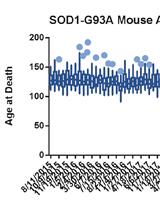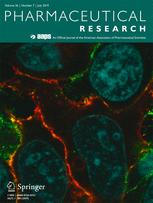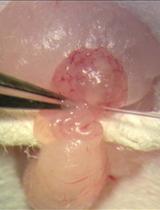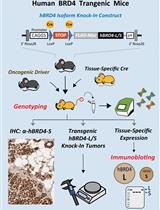- EN - English
- CN - 中文
Genotyping of the OATP1B1 c. 521 T>C Polymorphism from the Formalin-Fixed Paraffin-Embedded (FFPE) Tissue Specimens: An Optimized Protocol
对FFPE组织样品中OATP1B1 c. 521 T>C多态性进行基因分型的优化实验方法
(*contributed equally to this work) 发布: 2019年08月20日第9卷第16期 DOI: 10.21769/BioProtoc.3343 浏览次数: 4265
评审: Gal HaimovichWilliam C. W. ChenAnonymous reviewer(s)

相关实验方案

一种基于qPCR 的高通量研究 SOD1G93A小鼠模型中相对拷贝数的基因分型方法
Valerie R. Tassinari and Fernando G. Vieira
2019年06月20日 7197 阅读
Abstract
Organic anion transporting polypeptide (OATP) 1B1 is a liver-specific transport protein that plays an important role in hepatic drug disposition. It transports many drugs from the blood into the liver, including lipid-lowering statins. The c. 521 T>C polymorphism of OATP1B1 has reduced transport activity and is associated with statin-induced myopathy. Formalin-fixed paraffin-embedded (FFPE) liver tissues can be an enriched source for genotyping of this clinically significant OATP1B1 polymorphism in retrospective studies. The successfulness of genotyping using Sanger-sequencing of a PCR product from FFPE tissue relies on a successful PCR amplification using genomic DNA extracted from the FFPE tissues. Such PCR amplification is often limited by the quality of DNA extracted from the FFPE tissue. An optimized method for high-quality DNA extraction and efficient PCR amplification is highly needed in order to genotype polymorphisms such as the c. 521 T>C polymorphism using FFPE tissues. The current study established an optimized and reproducible method for a Sanger-sequencing-based genotyping method using FFPE human liver tissues that is applicable to even small FFPE tissues such as needle-core biopsy specimens.
Keywords: Membrane transport proteins (膜转运蛋白)Background
Organic anion transporting polypeptide (OATP) 1B1 is a liver-specific transport protein that plays an important role in hepatic drug disposition (Shitara et al., 2013; Khurana et al., 2014; Lee et al., 2015). It transports many drugs from blood into the liver including lipid-lowering statins, anti-cancer and anti-hepatitis C virus drugs (Hsiang et al., 1999; Hirano et al., 2004; Simonson et al., 2004; Nozawa et al., 2005; Feng et al., 2009; Oostendorp et al., 2009; Hartkoorn et al., 2010). The c. 521 T>C polymorphism of OATP1B1 has reduced transport activity and is associated with altered toxicity of drugs that are OATP1B1 substrates such as statins. Genotyping the c. 521 T>C of OATP1B1 using archived liver FFPE tissue allows retrospective correlation of the transport activity of OATP1B1 due to genetic variation with toxicity and efficacy of drugs that are OATP1B1 substrates, indicating its significant clinical relevance. The Sanger-sequencing-based genotyping method using FFPE tissues is often limited by the lack of an efficient PCR product using DNA template extracted from the FFPE tissues. A recent publication reported that the DNA template from the FFPE tissue itself can inhibit the PCR efficiency (Dietrich et al., 2013). Based on this finding, we optimized the DNA template amount used for PCR and suggest an upper limit of DNA that should not be exceeded for PCR in FFPE tissue. We also identified an efficient kit for DNA purification for the FFPE tissue. We report an optimized, reproducible protocol for PCR using FFPE DNA as template.
Materials and Reagents
- 1.7 ml Eppendorf tubes (VWR, catalog number: 87003-294)
- 0.65 ml Eppendorf tubes (VWR, catalog number: 87003-290)
- 20 μl ARTTM Barrier Low-Retention Pipette tips (Thermo Fisher Scientific, catalog number: 02-707-432)
- 200 μl ARTTM Barrier Low-Retention Pipette tips (Thermo Fisher Scientific, catalog number: 21-402-486)
- Parafilm (VWR, catalog number: 52858-000)
- Micro-Tube Cap Locks (Research Products International, catalog number: 145063)
- Formalin-Fixed Paraffin-Embedded (FFPE) tissue
The FFPE tissue blocks from surgical resection (1.5-2.5 x 1.5-2.0 x 0.2-0.3 cm) and needle-core biopsy specimens (1.4-2.0 x 0.1-0.2 x 0.2-0.2 cm) were sliced into paraffin rolls (~2 μm) at the University of Oklahoma Health Sciences Center Stephenson Cancer Center Tissue Pathology Shared Resource facilities. Each Eppendorf tube contains 2-3 tissue rolls. Paraffin rolls should be stored at -20 °C. - Formalin-Fixed Paraffin-Embedded (FFPE) DNA Isolation Kit (Zymo Research, catalog number: D3067).
Note: Store all kit components at room temperature except proteinase K and storage buffer after mixing (-20 °C) and resuspended RNase A (4 °C). - Zymoclean Gel DNA Recovery Kit (Zymo Research, catalog number: D4007),store kit at room temperature
- QIAamp DNA FFPE Tissue Kit (QIAGEN, catalog number: 56404) (Tissue from liver donors 1-3 were used with the QIAmp kit to isolate DNA)
- 100% Ethanol (VWR, catalog number: 71001-630), store at room temperature
- Isopropanol (IBI Scientific, catalog number: IB15735), store at room temperature
- Nuclease-free water (Thermo Fisher Scientific, catalog number: NC075301)
Note: Water was aliquoted (1 ml per Eppendorf tube) in cell culture hood and stored at -20 °C. A new aliquot was used each time to avoid cross contamination. - Phusion High-Fidelity DNA Polymerase (100 units) (Thermo Fisher Scientific, catalog number: F530S), store at -20 °C
- 5x Phusion High-Fidelity Buffer (Thermo Fisher Scientific, catalog number: F-518), store at -20 °C
- 10 mM dNTP Mix (Invitrogen, catalog number: 18427-013), store at -20 °C
- Agarose (Thermo Fisher Scientific, catalog number: BP160-100), store at room temperature
- Ethidium Bromide (Thermo Fisher, catalog number: 15585011), store at 4 °C
- Tris Base (Thermo Fisher, catalog number: BP152-5), store at room temperature
- Boric Acid (Sigma, catalog number: B0394), store at room temperature
- 100 base pair (bp) DNA ladder (Promega, catalog number: G210A), store at -20 °C
- 6x Blue/Orange loading dye (Promega, catalog number: G190A), store at -20 °C
- Forward and Reverse primers (Sigma). Primers were synthesized at 0.05 μM synthesis scale and pre-diluted to 100 μM in water with desalt purification, store at -20 °C
Forward Primer: AAATTACCCAGTCTCAGGTATG
Reverse Primer: TGTCCTTCTTTAGCGAAATC - Ethylenediaminetetra-acetic acid (EDTA) (Sigma, catalog number: EDS-100g), store at room temperature
- 10x Tris-Borate EDTA (TBE) Buffer (see Recipes)
- 0.5x Tris-Borate EDTA (TBE) Buffer (see Recipes)
Equipment
- Pipettes: Research Plus® 4-pack (0.1-2.5 μl, 2-20 μl, 20-200 μl, 100-1,000 μl) (Eppendorf, manufacture ID: 2231300004)
- Heat block (55-94 °C) (VWR, catalog number: 75838-318)
- Centrifuge (Eppendorf, model: 5424R)
- Vortex (Vortex Genie 2, 110V, VWR, catalog number: 100370-856)
- Thermocycler (Techne, Cole-Parmer Scientific Experts, TC-312)
- NanoDrop Spectrophotometer (NanoDrop Technologies, ND-1000 UV/Vis)
- 3730xl DNA Analyzer for sequencing (Applied Biosystems, 3730xl)
- BioRad Molecular XRS Imager (BioRad, Hercules, CA)
Software
- Finch TV Software (Geospiz, Inc., https://digitalworldbiology.com/FinchTV)
- Image Lab software (BioRad, Hercules, CA)
Procedure
文章信息
版权信息
© 2019 The Authors; exclusive licensee Bio-protocol LLC.
如何引用
Crowe, A., Miller, J. and Yue, W. (2019). Genotyping of the OATP1B1 c. 521 T>C Polymorphism from the Formalin-Fixed Paraffin-Embedded (FFPE) Tissue Specimens: An Optimized Protocol. Bio-protocol 9(16): e3343. DOI: 10.21769/BioProtoc.3343.
分类
分子生物学 > DNA > 基因分型
您对这篇实验方法有问题吗?
在此处发布您的问题,我们将邀请本文作者来回答。同时,我们会将您的问题发布到Bio-protocol Exchange,以便寻求社区成员的帮助。
Share
Bluesky
X
Copy link











